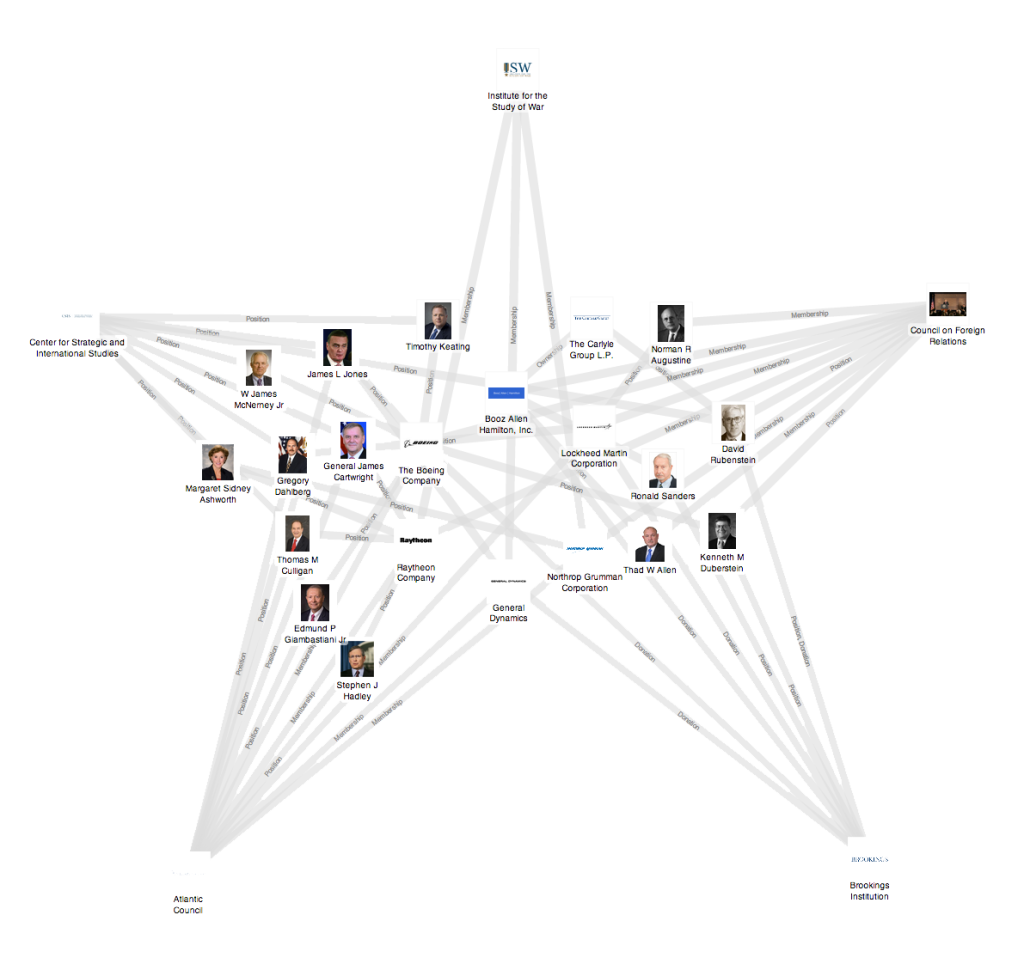A damning report on the conflict of interests in the Syrian Crisis debate identified numerous corporate and defense industry ties of experts and think tanks who commented on potential military intervention. Much of the debate over Syria got underway in 2013, when not only were the conflicts-of-interest and military-industrial complex ties of these “consultants” and “experts” rarely disclosed, but the ideas they expressed were mere permutations of an ideologically narrow spectrum of U.S. and Western neo-conservative interventionism.
As US official sources are now claiming that ISIS is developing chemical weapons those same experts and think tanks are back with a vengeance.
The conflict-of-interest report by the Public Accountability Initiative (http://public-accountability.org) offers a new look at an issue raised by David Barstow’s 2008 Pulitzer Prize-winning New York Times series on the role military analysts played in promoting the Bush Administration’s narrative on Iraq. In addition to exposing coordination with the Pentagon, Barstow found that many cable news analysts had industry ties that were not disclosed on air.
During the public debate around the question of whether to attack Syria, Stephen Hadley, former national security adviser to George W. Bush, made a series of high-profile media appearances. Hadley argued strenuously for military intervention in appearances on CNN, MSNBC, Fox News, and Bloomberg TV, and authored a Washington Post op-ed headlined “To stop Iran, Obama must enforce red lines with Assad.” The phrase “red line” has been used numerous times in reference to Syria and its President Bashar al-Assad, particularly in attempt to establish the legal intervention of Russian forces in Syria as a crossing of those lines. It was also used in 2014 by those in favor of forcible ‘regime change’ in Syria when rockets with sarin filled warheads landed in rebel-held residential areas in Ghouta, Syria, killing hundreds and injuring thousands. Each side naturally blamed the other, with western intelligence agencies providing evidence supporting the opposition, and Russian intelligence supporting the regime. Both sides issued biased reports with cherry-picked evidence, only adding to the confusion. An analysis of all evidence relating to the August 21st chemical attack indicate it was carried out by opposition forces. According to the most likely scenario, they used looted incendiary rockets, refilled them with sarin they manufactured themselves, and launched them from a rebel-held territory 2 km north of Zamalka.
Stephen Hadley’s television audiences were never informed that he serves as a director of Raytheon, the weapons manufacturer that makes the Tomahawk cruise missiles that were widely cited as a weapon of choice in a potential strike against Syria. Hadley earns $128,500 in annual cash compensation from the company and chairs its public affairs committee. He also owns 11,477 shares of Raytheon stock, which traded at all-time highs during the Syria debate ($77.65 on August 23, making Hadley’s share’s worth $891,189). Despite this critically important financial stake, Hadley was presented to his audience as an experienced, independent national security expert.
Though Hadley’s undisclosed conflict is particularly egregious, it is not unique. The following report documents the industry ties of Hadley, 21 other media commentators, and seven think tanks that participated in the media debate around Syria. Like Hadley, these individuals and organizations have strong ties to defense contractors and other defense- and foreign policy-focused firms with a vested interest in the Syria debate, but they were presented to their audiences with a veneer of expertise and independence, as former military officials, retired diplomats, and independent think tanks.
A pentagonal network: think tank-defense industry ties [image via public-accountability.org]
If the recent debate around Syria is any guide, media outlets have done very little to address the gaps in disclosure and abuses of the public trust that Barstow exposed. Some analysts have stayed the same, others are new, and the issues and range of opinion are different. But the media continues to present former military and government officials as venerated experts without informing the public of their industry ties – the personal financial interests that may be shaping their opinions of what is in the national interest. This report details these ties, in addition to documenting the industry backing of think tanks that played a prominent role in the Syria debate. It reveals the extent to which the public discourse around Syria was corrupted by the pervasive influence of the defense industry, to the point where many of the so-called experts appearing on American television screens were actually representatives of companies that profit from heightened US military activity abroad. The threat of war with Syria may or may not have passed, but the threat that these conflicts of interest pose to public discourse – and democracy – is still very real.
Source Article from http://feedproxy.google.com/~r/blacklistednews/hKxa/~3/jioCs_-zcVU/M.html
 RSS Feed
RSS Feed















 January 23rd, 2016
January 23rd, 2016  Awake Goy
Awake Goy 
 Posted in
Posted in  Tags:
Tags: 













